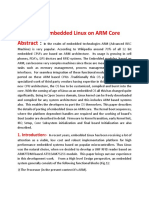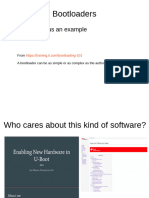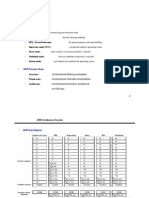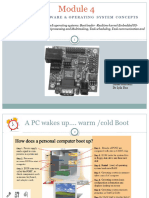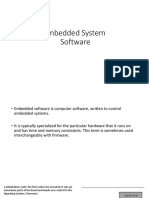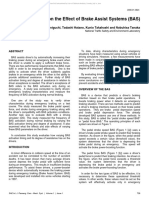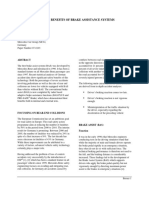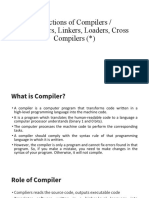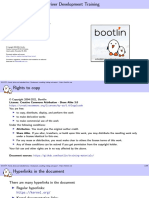0% found this document useful (0 votes)
59 views21 pages(Lec 3) Embedded - Linux - Fundamental
This document provides an overview of embedded Linux fundamentals, including its architecture, development environment, and boot process. It describes the typical software components of an embedded Linux system, such as the cross-compilation toolchain, bootloader, Linux kernel, C library, and applications. It also discusses embedded Linux development tasks like board support package development, system integration, and application development. Additionally, it covers topics like the differences between the host and target systems, various bootloader types, and an example boot sequence using U-Boot.
Uploaded by
NGUYEN MANCopyright
© © All Rights Reserved
We take content rights seriously. If you suspect this is your content, claim it here.
Available Formats
Download as PDF, TXT or read online on Scribd
0% found this document useful (0 votes)
59 views21 pages(Lec 3) Embedded - Linux - Fundamental
This document provides an overview of embedded Linux fundamentals, including its architecture, development environment, and boot process. It describes the typical software components of an embedded Linux system, such as the cross-compilation toolchain, bootloader, Linux kernel, C library, and applications. It also discusses embedded Linux development tasks like board support package development, system integration, and application development. Additionally, it covers topics like the differences between the host and target systems, various bootloader types, and an example boot sequence using U-Boot.
Uploaded by
NGUYEN MANCopyright
© © All Rights Reserved
We take content rights seriously. If you suspect this is your content, claim it here.
Available Formats
Download as PDF, TXT or read online on Scribd
/ 21



